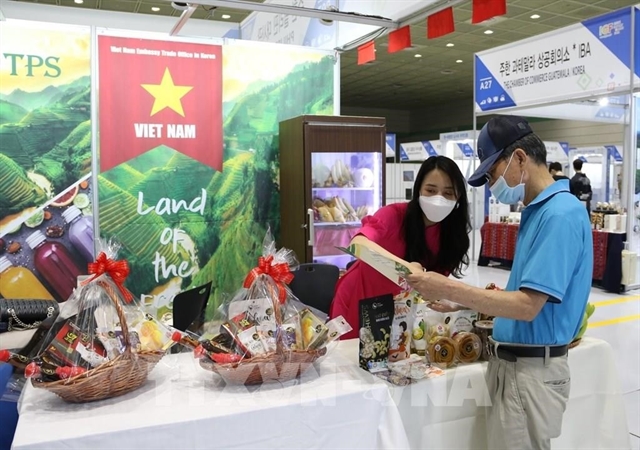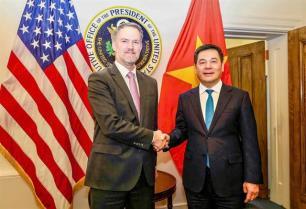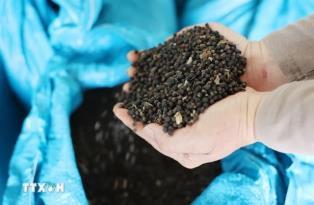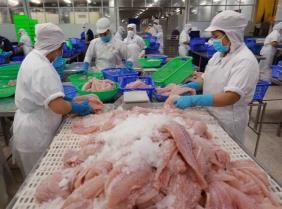Participants also emphasised the need for enterprises to understand technical barriers and market regulations to facilitate exports.

HÀ NỘI — The Ministry of Industry and Trade organised a seminar in Hà Nội on Tuesday to analyse opportunities and challenges for Vietnamese exporters to markets in the EU and under the Regional Comprehensive Economic Partnership (RCEP).
At the seminar, Dr Bùi Duy Linh from the Institute of International Business and Economics at the Foreign Trade University said the RCEP is the world’s largest free trade agreement, bringing together 10 ASEAN countries and five partners: China, Japan, the Republic of Korea, Australia and New Zealand. The bloc accounts for nearly 30 per cent of global GDP and one-third of the world’s population, with annual intra-regional trade exceeding US$12.7 trillion.
RCEP markets currently make up about 45 per cent of Việt Nam’s total export turnover, equivalent to $175 billion in 2024. Exports to the bloc in the first 10 months of this year were estimated at between $172 billion and $180 billion, accounting for 44–46 per cent of total export value, reaffirming RCEP as a key region for Vietnamese goods.
Meanwhile, the EU remains a major destination for high-value Vietnamese exports, accounting for more than 12 per cent of national export turnover. In 2024, exports to the EU reached about $48 billion, up more than 10 per cent from the previous year, while the figure for the first 10 months of 2025 was estimated at $46.5–48.5 billion, or 12–13 per cent of total exports.
“These markets offer major advantages for manufacturers with regional supply chains. This is a good time for Vietnamese businesses to strengthen intra-regional links, reduce dependence on traditional markets and become more proactive amid global trade fluctuations,” said Chairman of the HCM City Business Association Nguyễn Ngọc Hòa.
However, seminar participants also emphasised the need for enterprises to understand technical barriers and market regulations to facilitate exports. Tariff reductions under RCEP are not uniform, with some sectors benefitting immediately while others must wait up to 20 years. The EU applies the strictest standards on traceability, carbon emissions and ESG compliance, requiring greater investment from Vietnamese firms to sustain long-term orders.
Experts also said that RCEP’s cumulative rules of origin allow goods made from materials produced in member countries to be recognised as originating from within the region, helping Vietnamese businesses restructure supply chains and cut import costs.
According to Đại Dũng Group Chairman Trịnh Tiến Dũng, forming domestic alliances to share data, technology and standards is crucial to reduce import dependence and strengthen resilience against supply chain disruptions.
Meanwhile, AA Corporation Chairman Nguyễn Quốc Khanh said that the green transition and digitalisation are now mandatory to retain orders from both the EU and RCEP markets.
“Firms must standardise everything from materials and labour to production processes. Without meeting low-emissions and clean-energy standards, products risk exclusion from supply chains,” he said.
Experts also called for improved access to low-cost capital for green transition projects, as Vietnamese firms still face higher interest rates of 5–7 per cent compared to 3–5 per cent in neighbouring countries.
According to Bùi Huy Hoàng, deputy director of the Centre for E-commerce and Digital Economy Development, cooperation with e-commerce platforms has enabled Vietnamese exporters to expand their reach beyond traditional markets such as the US, China, the EU, Japan and the Republic of Korea, increasing goods sold to ASEAN, the Middle East, Russia and Australia.
Director of the Việt Nam Trade Promotion Agency Vũ Bá Phú said the ministry is speeding up development of the GoGlobal information portal and an intelligent e-commerce data ecosystem to help businesses assess risks, rank markets and connect with partners in real time.
The event was part of a series of programmes aimed at helping Vietnamese enterprises make the most of opportunities to expand export markets in the near future. —VNS





